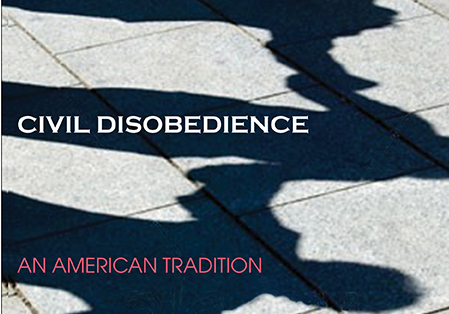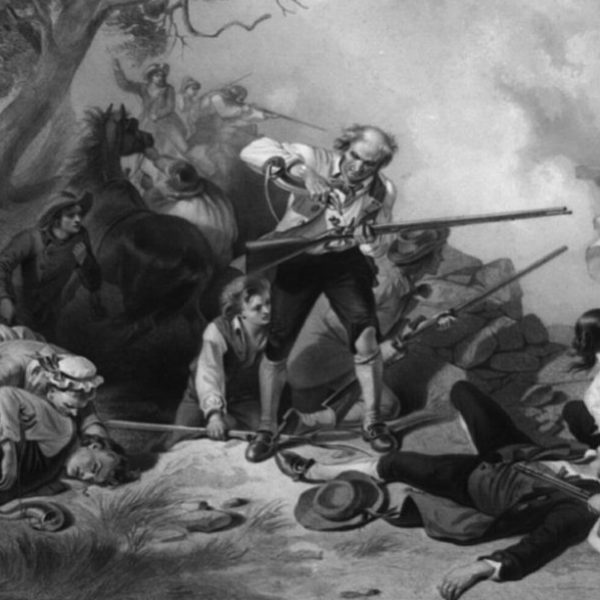Civil Disobedience: An American Tradition
In the newly published Civil Disobedience: An American Tradition, Lewis Perry traces the history of civil disobedience in the United States from its pre-revolutionary backgrounds to the present. Amidst the controversy that ebbs and flows over civil disobedience, and the studies of individuals and events, there seems to be one element missing from public discussion: the examination of long-term patterns, influences and discontinuities. Not only does Perry fill this gap by tracing connections between periods and movements, he also highlights some recurrent problems as experienced by those who have violated laws in the name of a higher morality, focusing particularly on the underlying paradoxical feeling of wanting to respect the law while being unable to ignore immoralities in those institutions of civil society.
 “Civil disobedience,” Perry, Professor Emeritus in the Department of History at Saint Louis University, writes in his introduction, “appears in the news almost daily.” During the spring, the stories often occur on campuses. Take for instance the 2001 sit-in by Penn State students to bring attention to death threats against a black student leader; the hunger strike conducted by Wesleyan students, angry that a popular teacher was being let go; the take-over of a campus building by Harvard students for three weeks to press the university to pay a “living wage” to janitors and other workers. But of course, civil disobedience is hardly limited to campuses in the springtime, and it is unlikely to disappear from American public life at any point in the future. Perry explains, “In recent years protests against abortion clinics, police brutality, nuclear armaments, marriage laws, and world trade policies have featured dramatic and well-publicized acts of civil disobedience. These are late instances of a long-standing tradition, and even amid heightened concern about terrorist threats there has been relatively little public talk of suppressing American’s recourse to sit-ins and other expressions of civil disobedience.”
“Civil disobedience,” Perry, Professor Emeritus in the Department of History at Saint Louis University, writes in his introduction, “appears in the news almost daily.” During the spring, the stories often occur on campuses. Take for instance the 2001 sit-in by Penn State students to bring attention to death threats against a black student leader; the hunger strike conducted by Wesleyan students, angry that a popular teacher was being let go; the take-over of a campus building by Harvard students for three weeks to press the university to pay a “living wage” to janitors and other workers. But of course, civil disobedience is hardly limited to campuses in the springtime, and it is unlikely to disappear from American public life at any point in the future. Perry explains, “In recent years protests against abortion clinics, police brutality, nuclear armaments, marriage laws, and world trade policies have featured dramatic and well-publicized acts of civil disobedience. These are late instances of a long-standing tradition, and even amid heightened concern about terrorist threats there has been relatively little public talk of suppressing American’s recourse to sit-ins and other expressions of civil disobedience.”
But what exactly qualifies as an instance of civil disobedience? For instance, in 2008, a group of Long Island teenagers protested against high gasoline prices by walking or biking to school instead of driving; in another case, the managing editor of the National Review urged college applicants to lie about their race on their applications—do these really count as examples? In his book, Perry distinguishes civil disobedience from forms of violent resistance and indirect protects like boycotts. He acknowledges that while civil disobedience is an “odd and elusive concept,” it cannot be understood “if we generalize it to include all forms of resistance, day-to-day or extraordinary.”
One intriguing pattern that emerges in the book, which Barton Swaim points out in his review in the Wall Street Journal, is that before the middle of the 19th century, Americans activists almost always justified their disobedience by referring to a higher authority such as divine law, but later the justification tended to be derived from within rather than from above; from abstract principles rather than God. One exception, however, was the civil rights movement in the South, as black Southerners were “still steeped in a religious worldview,” Swaim explains.
Ultimately, Perry’s book demonstrates that the American tradition of civil disobedience exhibits tremendous variation, and does not come with a predictable code of behavior or dogma. But what is certain is that the tradition is unlikely to die out any time soon, for as Martin Luther King once proclaimed, “The day of the demonstrations isn’t over.”




